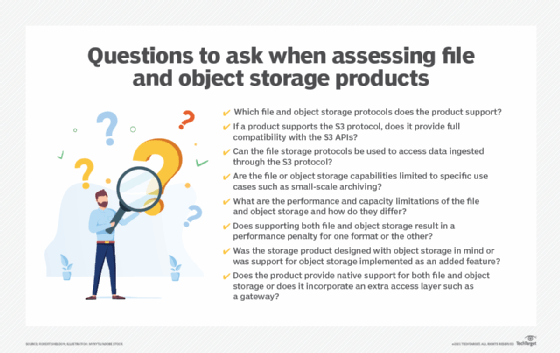
Gorodenkoff - stock.adobe.com
4 top data storage trends for 2025
This year's trends include some technologies, such as artificial intelligence, that make platforms more secure and easier to manage, plus a convergence of two storage types.
Organizations need flexible, cheap storage that performs well. That might seem like too much to ask, but it's possible with advances in storage technologies.
The following data storage trends for 2025 cover ways vendors are working on improvements, as well as customer attitudes toward how they store data.
1. AI integration
The top data storage trend for 2025, as it was for 2024, is unquestionably the use of AI for storage management. Admins will increasingly use AI for tasks such as tiering, migration, optimization, provisioning, and even backups and other forms of data protection, such as failure predictions.
AI can enhance data tiering. At its simplest, data tiering seeks the best possible end-user experience by moving hot data to a high-speed storage tier. Cooler, less frequently used data is moved off the high-speed tier and onto the cheaper but slower high-capacity tier. Some data tiering platforms also include cloud tiers.
In the past, access patterns determined the movement of data between storage tiers. AI can help make the end-user experience better by learning users' data access habits. An AI engine could anticipate the files that users will access at a given time and preemptively move those files to the high-speed tier for the best possible performance.
As an AI engine learns the users' data access patterns, it can distinguish between normal and abnormal behavior. As such, AI could identify a security incident or a ransomware attack by its data access patterns and then take steps to shut down the attack before it causes significant damage. AI could also recognize which files have been encrypted during the early stages of a thwarted ransomware attack and automatically roll those files back to their unencrypted state.
Admins can also use AI as a tool for assisting with storage optimization. A storage admin might, for example, use AI to analyze usage patterns and system resource consumption. An AI engine can then use this information to make recommendations on how to allocate resources to avoid issues, reduce costs or both.
2. The need for consistent management
One of the issues that has long plagued organizations is an inconsistent storage management experience. In a hybrid multi-cloud environment, for example, an organization might use the S3 dashboard to manage its AWS storage, the Microsoft Azure portal to manage Azure storage and yet another tool to manage on-premises storage. Additionally, storage management tools designed for on-premises use tend to be proprietary, so an organization could have to use a separate tool to manage each storage vendor's hardware.
Vendors such as SolarWinds and ManageEngine have long offered tools for multi-vendor storage management. Storage management tools increasingly support both cloud and on-premises storage.
At least some storage vendors are also adapting their proprietary management tools to support hybrid multi-cloud storage. For example, QNAP offers a cloud NAS product, QuTScloud, that enables organizations to build a NAS from cloud storage. This approach eases the management burden by using a standardized interface to manage all NAS appliances, both physical and cloud-based.
NetApp On Cloud, another tool, natively supports a variety of clouds and provides a uniform management experience, regardless of where an organization's data is located.
3. File and object storage convergence
Traditionally, most NAS appliances have been specifically designed with file storage in mind. More recently, however, vendors have begun offering NAS appliances that support both file and object storage. Some of these appliances can accommodate file and object storage simultaneously and might even support automatically moving data between the two, perhaps following a data archiving policy.
Cloud providers first popularized scalable object storage. Object storage lacks a traditional file system, though. Files are stored in a flat architecture, although it is possible to create the illusion of a hierarchical folder structure.
Object storage is well-suited for large datasets, such as big data initiatives. Compliance-driven data retention policies might necessitate the need for object storage. AI applications that ingest massive amounts of data also favor object storage.

4. Native virtualization integration
Enterprise NAS vendors have for many years created hardware certified compatible with virtualization platforms from vendors such as VMware, Microsoft or Citrix. However, some storage vendors have begun to use virtualization in new ways.
QNAP's Virtualization Station, for example, lets users run VMs directly on a NAS appliance, using the vendor's proprietary hypervisor. The vendor also enables the native migration of VMware VMs to the QNAP platform.
NetApp takes a different approach to integrated virtualization through its OnTap Select. The product is similar to NetApp OnTap, but it is software-only and designed to run on a virtualization host. Users can natively build OnTap clusters on virtual hardware, as opposed to needing to use physical NetApp hardware.
Brien Posey is a former 22-time Microsoft MVP and a commercial astronaut candidate. In his more than 30 years in IT, he has served as a lead network engineer for the U.S. Department of Defense and a network administrator for some of the largest insurance companies in America.







